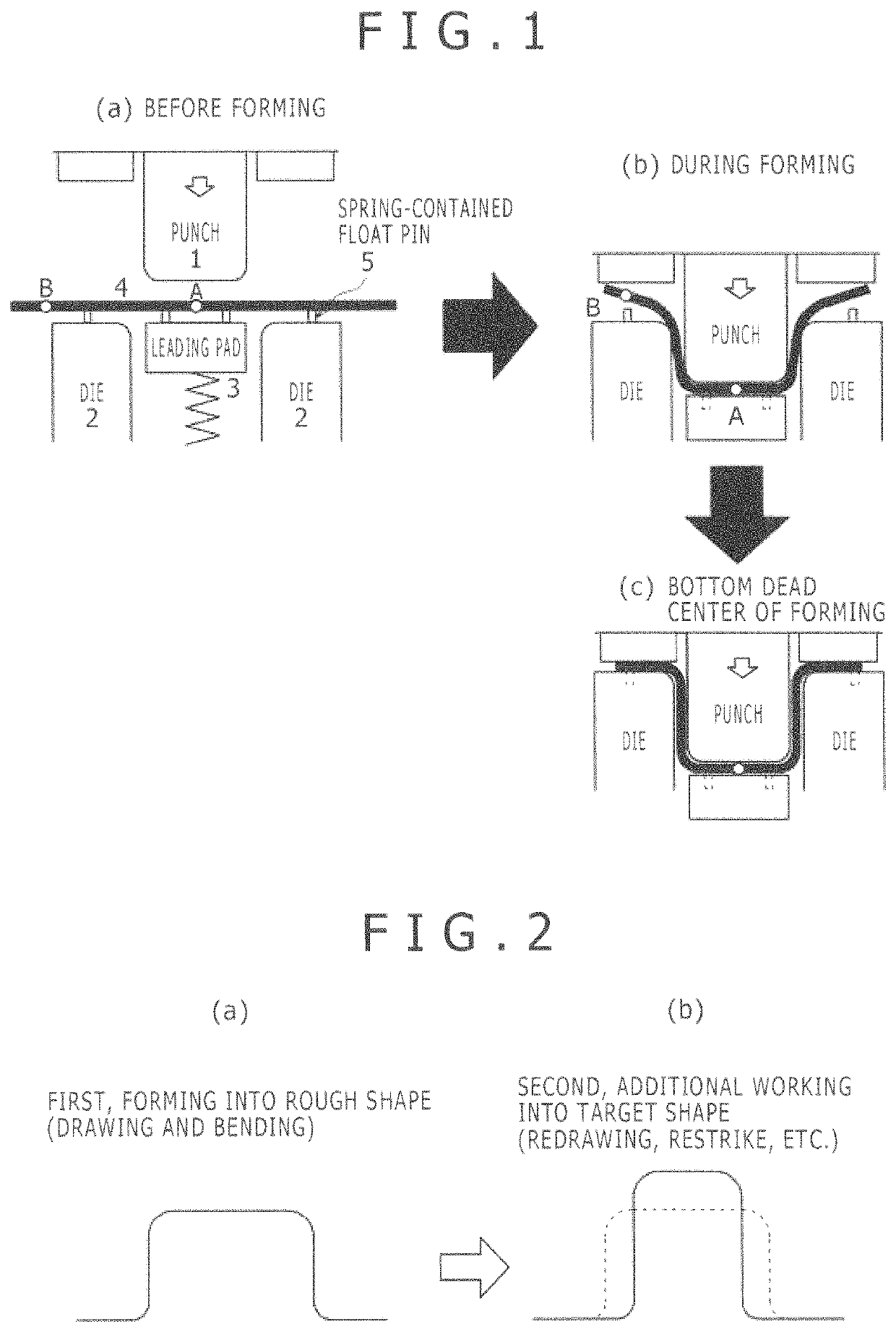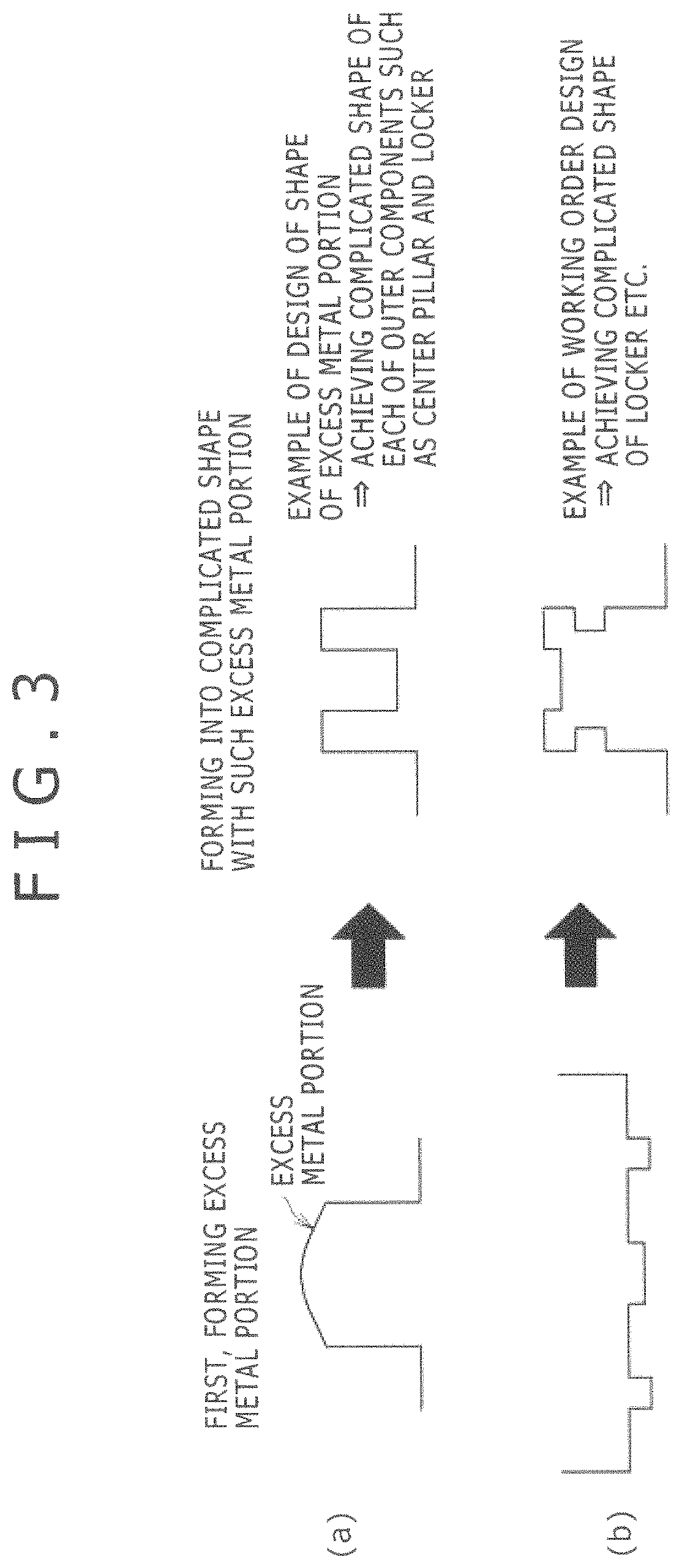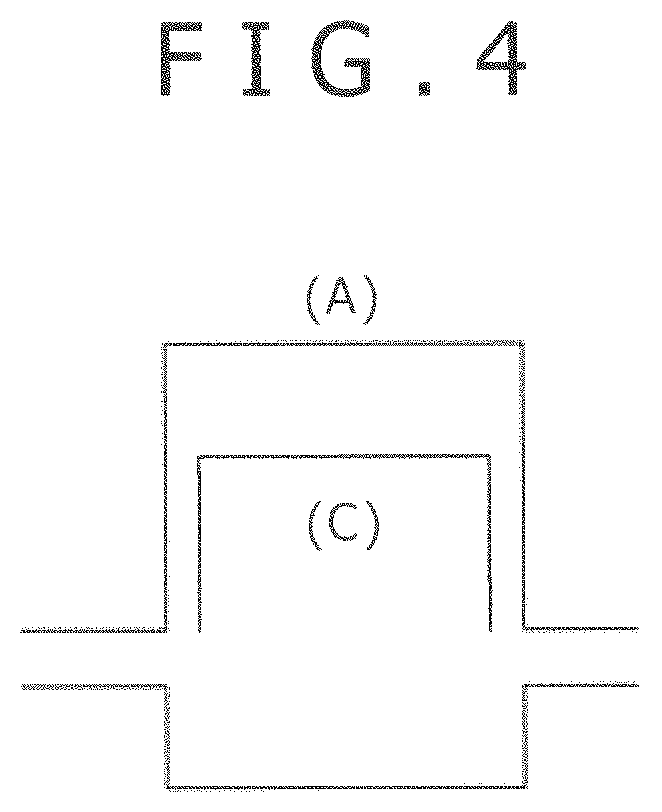Method of manufacturing hot-press-formed steel member
a technology of hot press and steel member, which is applied in the direction of manufacturing tools, heat treatment equipment, furnaces, etc., can solve the problems of high workability required for steel sheets, low productivity, and increase in the forming load of press working, etc., and achieve excellent tensile elongation ductility, excellent bendability, and high workability.
- Summary
- Abstract
- Description
- Claims
- Application Information
AI Technical Summary
Benefits of technology
Problems solved by technology
Method used
Image
Examples
example 1
[0160]A steel sheet (a blank with a size having a thickness of 1.4 mm, a width of 190.5 mm, and a length of 400 mm) having a chemical composition (the remainder consisting of iron and inevitable impurities) shown in Table 1 was prepared. The steel sheet was then subjected to press forming working, i.e., hot press forming or cold press forming, according to the procedure illustrated in FIG. 11. In Example 1, heating temperature in the hot press forming was 930° C., and start temperature of the hot press forming was 800 to 700° C. In Experiment Nos. 4 to 9 and 11 to 18 in Table 2 described later, Experiment No. 18 was subjected to forced wing cooling after press forming, and Experiment No. 7 was held in a holding furnace for 6 min after press forming, and was then subjected to natural cooling as illustrated in FIG. 11. Experiment Nos. 4 to 6, 8, 9, and 11 to 17 were each subjected to natural cooling without blower after press forming.
[0161]In each of formulas for calculation of the Ac...
example 2
[0186]Subsequently, steel members produced in Experiment Nos. 1, 5, 8, and 10 to 18 in Table 2 were each subjected to a bending test for evaluation of bendability (workability).
(Bending Test)
[0187]As illustrated in FIG. 16, a steel strip 150 mm long and 30 mm wide was cut out as a bending test specimen from a longitudinal wall of the formed component (steel member). The specimen was subjected to preliminary bending as illustrated in FIG. 17(a). Subsequently, as illustrated in FIG. 17(b), a first end of the specimen was fixed by pinching a fixing tool and a lower tool, and a second curved end thereof was pinched by an upper tool and the lower tool, and then a load was applied from the upper side of the upper tool until the specimen was broken. A load, at a point where a bent portion of the specimen was broken, was determined, and the equivalent bending radius (R) was determined by formula (1). Table 3 shows results of the bending test. FIG. 18 illustrates an exemplary relationship be...
example 3
[0194]Subsequently, in the case where multistage press forming was performed, influence on dimension accuracy of each resultant steel member was investigated using steel members produced in Experiment Nos. 1, 5, and 8 to 10 in Table 2.
[0195]The dimension accuracy was evaluated through obtaining the maximum opening displacement as described below.
[0196]FIG. 19 is a diagram illustrating measurement points of opening displacement of each resultant steel member. The opening displacement was determined at A, B, and C. With the opening displacement, as illustrated in FIG. 20, values of (W-47.2) in cross sections at A, B, and C were obtained, and a largest value among such values was determined as the maximum opening displacement. Table 4 shows results of the measurement.
[0197]
TABLE 4Time requiredNumber of timesTime requiredHoldingMaximumSifor singleof press formingfor manufacturingat bottomopeningExperimentBlankcontentPresspress formingfor one componentone componentdead centerdisplacement...
PUM
| Property | Measurement | Unit |
|---|---|---|
| finish temperature | aaaaa | aaaaa |
| tensile strength | aaaaa | aaaaa |
| particle size | aaaaa | aaaaa |
Abstract
Description
Claims
Application Information
 Login to View More
Login to View More - R&D
- Intellectual Property
- Life Sciences
- Materials
- Tech Scout
- Unparalleled Data Quality
- Higher Quality Content
- 60% Fewer Hallucinations
Browse by: Latest US Patents, China's latest patents, Technical Efficacy Thesaurus, Application Domain, Technology Topic, Popular Technical Reports.
© 2025 PatSnap. All rights reserved.Legal|Privacy policy|Modern Slavery Act Transparency Statement|Sitemap|About US| Contact US: help@patsnap.com



